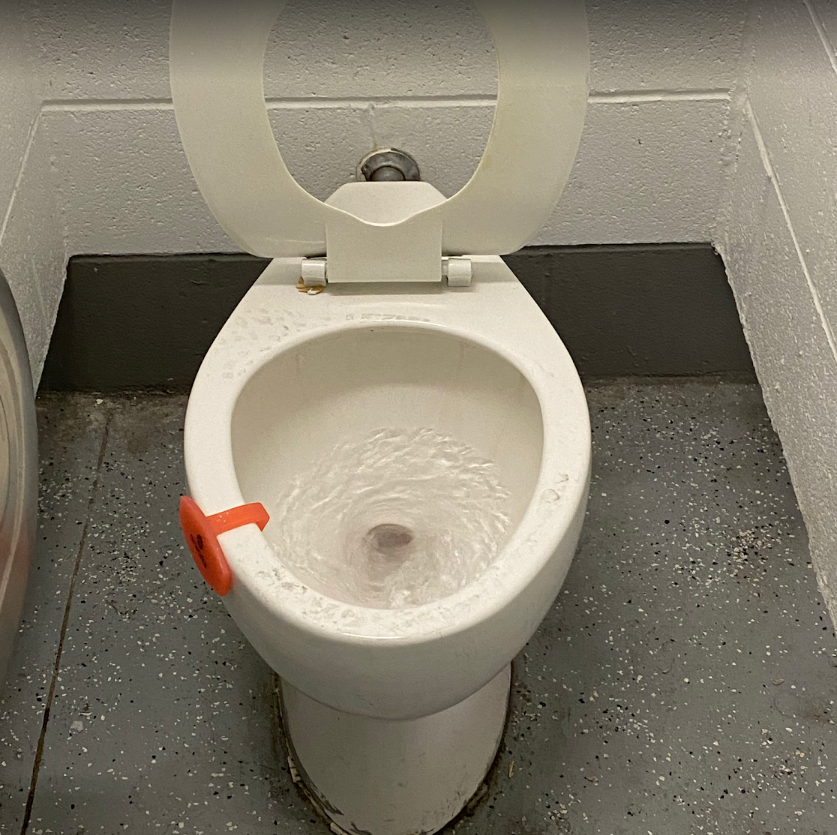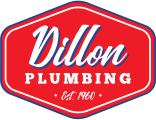
Toilet problems are more common than you might think. If you’re struggling with your toilet, contact the Nampa and Boise plumbers at Dillon Plumbing or read the information below to decide if you are comfortable tackling the problem yourself.
Flushing Problems
People call us all the time with questions about their toilets not flushing well. If you are having any sort of flushing problem, consider these ideas.
If your toilet is not flushing right, the tank may be too small to do the job. All toilets used to come with 7.5 gallon tanks, which almost always provided more than enough water to flush any human waste and toilet paper product. Because of federal water conservation efforts, toilet makers have had to create tanks that are much smaller. Sometimes these are as small as 1.6 gallons! Unfortunately, these smaller tanks could be the source of your flushing woes.
Check Water Levels
Before you replace your toilet, though, there are a few other things you could try. First, lift the lid off your tank and check the water level. Your tank should have a water line, marked at the factory, and the water inside should be level with that line. If your water level is below the line, add some water until it is at the line. This can make a major difference in how your toilet flushes.
Replace Fill Valve
Sometimes, refilling your tank isn’t enough. This happens when your ballcock or fill valve is broken, which means that your tank will take a long time to fill or that the water may never reach the factory’s water mark line.
This valve will look different depending on the style of your toilet. Older models are more likely to have a ballcock valve, which looks like a round float attached to an arm. Newer toilets will have a fill valve, which usually stands in the left corner of your tank. No matter the type of valve, it contains rubber seals, which can deteriorate over time, causing your valve to malfunction.
If you think this is your problem, you and your plumber have two options. You can replace the broken seal, or you can replace the whole valve.
If you have a fill valve and you want to replace the seal, start by buying a new seal from your hardware store. Make sure you turn off the water to the toilet before you work on it! Once it’s off, take apart the fill valve. Usually, the upper and lower halves simply twist apart. Pry out the damaged seal, taking care not to bend the pin in the center. Place the new seal exactly where the old one was, reassemble your fill valve, and your toilet should be as good as new!
If you want to replace your whole ballcock or fill valve, you can still start at your hardware store. Buy a new valve, making sure it is the same size as the one in your current toilet. You may also want to replace the water supply line that runs between the shut-off valve and the fill valve, to make sure that connection is leak-proof. If you go this route, make sure your replacement line is made of braided stainless steel. Once you have your parts, turn off the water to the toilet and place the new valve and line exactly as the old ones were placed.
If you’re not comfortable doing all of this work yourself, you can always call your local plumber. Their work should come with the added benefit of a warranty, so you won’t have to worry about future problems for a while.
Check Jet Hole
If your tank isn’t the problem but your toilet still isn’t flushing well, you can also check your jet hole. This is in the front of the toilet bowl under the water, and it should be clear. If you have hard water, though, it can get clogged with deposits from minerals like calcium and lime. You can use a bent metal clothes hanger or a screwdriver to break up the deposits. This should help your toilet flush better, too.
Leaking Toilets
People also call us often with leaky toilets. This usually looks like water pooling around the base of the toilet, though the fluid often comes from somewhere other than the seal around the base.
Before you can find out where the leak is coming from, you’ll need to mop up all of the water that has already leaked. Then, place toilet paper or paper towels around the entire base of your toilet. These absorb water quickly and, if you look at where the paper gets wet first, can help you determine where the leak is coming from. A flashlight can also help you by making it easier to see a drip.
First, examine the supply line between the shut-off valve and the fill valve in the toilet. If you see drips on it, replace it with a stainless steel braided supply line, which you can usually get at your local hardware store. Drips on the supply line can also indicate a hairline crack in your fill valve. If replacing the line doesn’t stop the leak, you may need to replace the entire fill valve, too.
Loose or Rusty Bolts
No drips on the supply line? Then check the bolts connecting the tank to the bowl. You can see these best if you look under the tank. Once there, examine the ends of the bolts for drips. You can also check for rust, which indicates the presence of water. If you see any indications that these have been wet, replace them with brass bolts.
Replace Gasket
If the bolts don’t show any signs of leakage, it’s time to flush the toilet. Sometimes, systems only leak when water is moving through them. If water leaks, trickles, or pours out between the tank and the bowl when you flush, then the tank-to-bowl gasket has gone bad. While you’re replacing this, it’s a good idea to replace your tank bolts and supply line, too, so you won’t have to do it later.
Check Seal
On the other hand, if water comes out of the base of the toilet when you flush it, then the seal has gone bad. You will need to replace it, and you should also check your toilet waste line for stoppages while you’re at it. These can cause back pressure, which will blow your seal again if you don’t clean them out.
Finally, make sure the toilet is stable. It should not rock or move at all when you sit on it. If it does, you will need to replace the seal. When you pull your toilet out, make sure your closet flange isn’t broken. If it’s not working properly, the toilet won’t bolt securely to your floor and you may have to replace the seal again! Use brass bolts whenever possible in securing your toilet, because brass doesn’t suffer water damage like other metals.
Overflowing Toilets
Overflowing is another common toilet problem. If your toilet overflows, there are several things that might be going wrong.
First of all, your toilet may be poorly designed. Unfortunately, there’s no way to guarantee that your toilet is flushing well. Some do better than others, and you may have to have a plumber evaluate your system to figure out if this is the problem.
The toilet can have a number of design problems. Sometimes, there’s not enough water in the tank to create the right kind of siphon action in the bowl. Other times, the refill tube is not in the right position inside the overflow tube, which means the bowl can’t fill properly. Finally, calcification can build up on the trapway of the bowl, which causes it to trap paper and not allow water and waste to move properly.
Check Pipes
If your toilet is working well, the pipes may be the problem. Older houses can still have cast iron waste lines. Rust, scale, and sediment can build up in these, and this debris can cause toilets to overflow. Even newer waste pipes, which are usually made of PVC, can lack the proper pitch or bellies to allow paper and waste to flow properly. Sometimes, they also have a long run without the right amount of fall, which impedes the flow of water and waste. No matter which type of piping you have, tree roots can also be an issue. They seek water, and so can grow in, around, and through your pipes as they search for it. Unfortunately, they can cause clogs in the process.
Stubborn Clogs
If everything is working well with the toilet and the pipes, it’s time to look at the circumstances around the overflows. Is there someone putting too much paper in your toilet? Has someone’s stool changed recently, possibly because of dietary changes or new medication? Or is the toilet designed to save water, and in the process of doing that not is carrying the waste away effectively? All of these things can cause toilet overflow, too.
A toilet that’s overflowing regularly needs some attention. Call us at Dillon Plumbing, we’ll diagnose your problem and give you a free estimate for fixing it. Give us a ring to schedule an appointment and we’ll come out and figure out what’s causing your problem.
What Can Go Into a Toilet?
It seems easy to flush things down the toilet when you are done with them. After all, a waste line that can handle paper and human waste ought to be able to handle anything you can throw at it, right? Wrong, there are so many items that you should never flush down the toilet.
Unfortunately, most toilets are uniquely designed to wash human waste and toilet paper away, so they don’t do very well with other items. Basically, if it doesn’t come from your body and it’s not toilet paper, keep it out of your toilet!
Even other types of paper can cause problems, because they are designed to clump together, not to break down. And wipes may be marked as “flushable” on the box, but they won’t necessarily do good things to your sewer lines!
Do NOT flush feminine hygiene products! These tend to get larger when they get wet, so they could easily clog your pipes.
Grease, no matter what kind, should be kept out of all pipes, whether in your bathroom or your kitchen. Grease tends to harden when it cools, so it can cause a massive blockage in your sewer system.
Drugs of any sort, even those you can buy over the counter, should be disposed of via pharmacies or other Nampa clinics that are specially equipped to deal with them. If you flush them down the toilet, the chemicals can end up in lakes, rivers or groundwater, since most processing facilities aren’t able to remove them from wastewater.
You will also want to pass on flushing anything from your kitchen. This may sound odd, but many people try to flush pumpkin seeds and other similar things, only to find that it clogs their pipes because it doesn’t biodegrade quickly enough.
Get Professional Toilet Repair in Boise or Nampa
There’s not a single thing that you SHOULD put down a toilet other than human waste and toilet paper, which is specifically designed to break down when it gets wet. If you or someone else has put something else down your toilet and you think it’s causing a problem, feel free to give us a call our plumbers in Boise and Nampa about toilet repair near you. Book an appointment and we’ll figure out what clogged your toilet and how to make your plumbing system work again.
